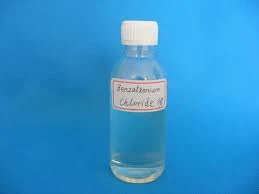Exploring Various Types of Flocculants for Enhanced Water Treatment Solutions
Different Types of Flocculants
Flocculants are substances that promote the clumping or agglomeration of particles in a suspension, facilitating the removal of solids from liquids, particularly in industrial and municipal wastewater treatment applications. Their role is crucial in enhancing the efficiency of sedimentation processes, where suspended solids are settled out of a liquid medium. Flocculants can be classified into several types based on their chemical composition, charge characteristics, and mechanisms of action. This article will explore the different types of flocculants and their applications.
1. Organic Flocculants
Organic flocculants are typically polymers derived from natural or synthetic sources. They are widely used in various industrial applications due to their effectiveness and relatively low toxicity. Organic flocculants can be broadly categorized into two subtypes
- Natural Organic Flocculants These are derived from natural sources such as starches, chitosan, and guar gum. Natural flocculants are biodegradable and non-toxic, making them suitable for applications in food processing and environmental remediation. Their effectiveness often depends on their molecular weight and charge density.
- Synthetic Organic Flocculants These are man-made polymers such as polyacrylamides (PAM), which are widely used in wastewater treatment. Synthetic flocculants can be tailored in terms of their charge density and molecular weight, allowing for precise control over their flocculation properties. Although they are effective, concerns regarding their residual toxicity and potential environmental impact have led to increased interest in biodegradable alternatives.
Inorganic flocculants are typically metal salts or oxides that promote particle aggregation through charge neutralization or bridging mechanisms. Common inorganic flocculants include
- Aluminium Sulfate (Alum) This is one of the most commonly used inorganic flocculants. It works by neutralizing the negative charges on suspended particles, allowing them to clump together and settle. Alum is used in drinking water treatment and various industrial applications.
- Ferric Chloride and Ferric Sulfate These iron-based coagulants are effective in removing suspended solids and phosphorus from wastewater. They can also aid in reducing odor and improving the aesthetic quality of treated water.
different types of flocculants

- Calcium Hydroxide (Lime) Often used in combination with other flocculants, lime helps to raise the pH of wastewater, promoting the precipitation of heavy metals and other contaminants.
3. Cationic Flocculants
Cationic flocculants carry a positive charge, making them particularly effective in treating negatively charged particles such as clay and organic matter. These flocculants are crucial in the paper and pulp industry, where they facilitate the retention of fine particles during the papermaking process. Additionally, they are beneficial in sewage treatment, where they enhance the removal of suspended solids and improve the performance of biological processes.
4. Anionic Flocculants
Anionic flocculants are negatively charged substances and are particularly effective in applications involving positively charged particles. They are often used in mining and mineral processing to separate minerals from slurries. Anionic flocculants, such as certain types of polyacrylamide, can effectively increase the settling rate of mineral particles, allowing for efficient recovery.
5. Non-Ionic Flocculants
Non-ionic flocculants do not carry any charge and can neutralize the charge of particles through mechanisms other than charge interactions, such as bridging. These flocculants are typically used in applications where pH and ionic strength are variable because they are less sensitive to changes in solution chemistry. Non-ionic flocculants are often found in applications involving sensitive biological treatments, such as municipal wastewater management.
Conclusion
In summary, flocculants play a vital role in the treatment of wastewater and the removal of suspended solids in various industrial applications. The choice of flocculant depends on the specific requirements of the treatment process, including the nature of the particles involved, the required efficiency of removal, and environmental considerations. As the demand for sustainable and effective treatment methods continues to grow, the development of new flocculant technologies, especially those derived from renewable resources, remains a key focus within the industry.
-
The Power of Isothiazolinones in Modern ApplicationsNewsMay.08,2025
-
Flocculants in Water TreatmentNewsMay.08,2025
-
Flocculants and Chemical Solutions: What You Need to KnowNewsMay.08,2025
-
Flocculants and Chemical Solutions: A Growing IndustryNewsMay.08,2025
-
Essential Chemicals: Polymaleic Anhydride and MoreNewsMay.08,2025
-
Acrylic Polymers: Essential Solutions for IndustryNewsMay.08,2025





